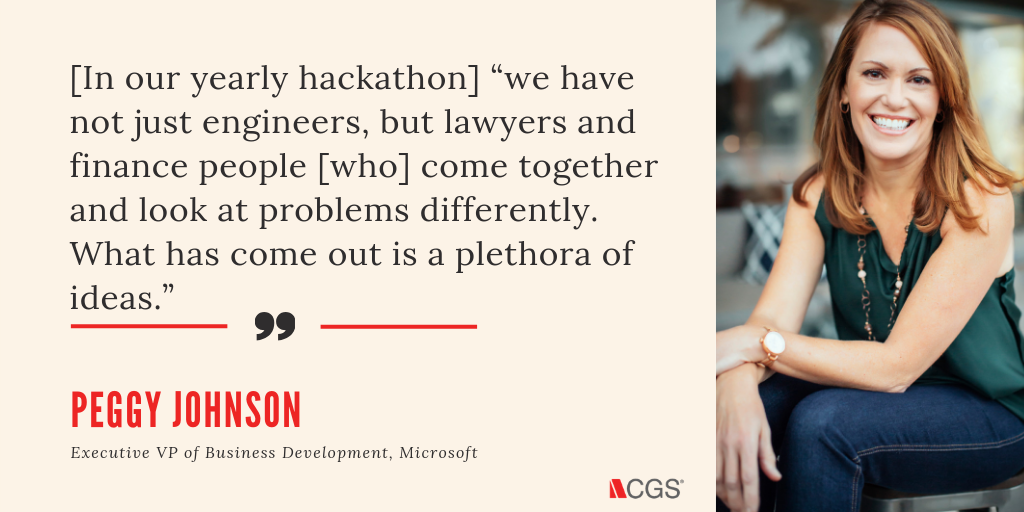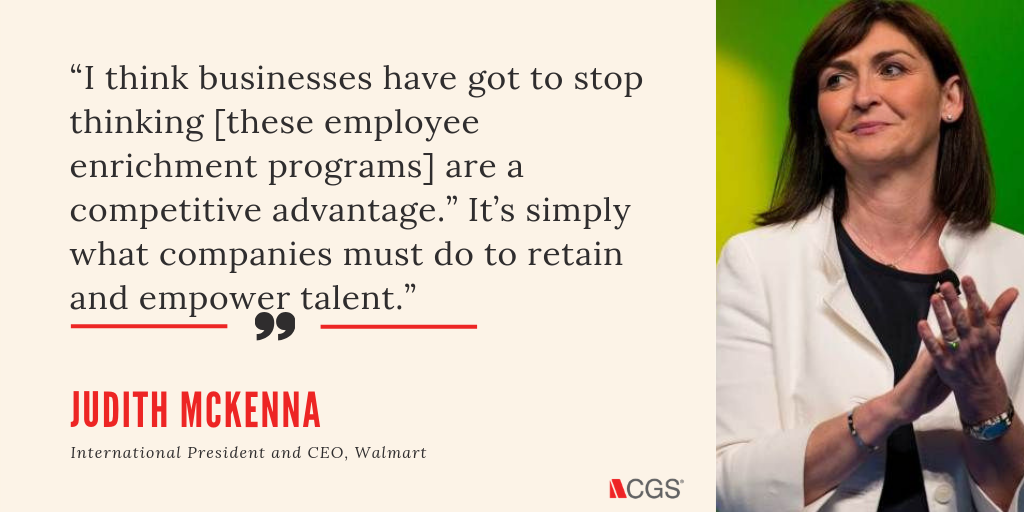Topics
5 Do's and Don’ts for Corporate Innovation Programs

Like all well-intended employee initiatives, striking a balance between the art and the science, or the emotional incentives and organized logistics of our programs is an ongoing struggle. The same equation certainly rings true for corporate innovation programs. Why are these becoming more and more prominent across businesses in all industries and sizes? The answer is quite simple – to outpace disruption.
Today, company cultures are more open and collaborative where employees are getting comfortable with speaking up while using a consultative mindset to rapidly share ideas on cross-collaborative projects. Whether businesses like it or not, this exciting form of networking through creating is weakening silos and formal hierarchies. For organizations with rigid barriers and limits, there’s a strong chance that high performing employees are looking for entrepreneurial organizations where imagineering is a central theme. And don’t be afraid if you’re not working in big tech. Today, everyone from Chobani to Disney is putting idea incubation and innovation together. From bringing on Chief Strategy Officers and Chief Growth Hacker-led special project teams to tapping specialists from all across the organization, companies like Comcast are even sponsoring external groups to partner on forward-thinking projects in hopes to hire this pool of talent.
Whether you're in the early stages of discovery, building and launching a pilot, or re-energizing your innovation program, there are some generally recommended do's and don'ts to ensure your innovation program is successful.

The Medium is the Message
DO: Make sure that you take an omni-channel approach to idea submission logistics. Regularly meet employees, subject matter experts and execs where they work so when an idea takes shape, you can be there to grab it. In my line of work, I've created a program called "Bold Ideas," for which we use a software that has a survey component, but also has a module for employees to submit suggestions (even anonymously) and then down/up-vote, and comment, to keep things transparent while social. We also utilize our internal communications app, Slack, to create a channel dedicated to our program and thus there's rapid "layer-caking" of ideas and thoughts happening in real-time. Finally, we have an email address to which program owners monitor suggestions that don't fit into the former two.
DON’T: Don't fall into the trap that innovation programs are a one-size-fits-all event that takes place during a yearly Hackathon, or Designathon, but instead think of it as a seamless method for capturing inspiration whenever and wherever it strikes. Don’t stick with an archaic paper suggestion box method after which people will forget about its existence, may feel shame in the physicality of having to walk up and be "seen" submitting what could be a radical idea, or worse, creating a time-suck of manual reporting or data collection. If this is all that exists in the realm of possibilities, maybe take a step back and use this guide as your business case for the suggestion box 2.0.
Vetting Ideas
DO: Democratize vetting and idea assessment throughout the entire business by assigning Idea Coaches from each functional business unit to be the first line of determining an idea’s risks, benefits, costs, timing, and other factors that would ultimately fall into the following categories: adopt (fresh ideas), adapt (bolt-on ideas), or archive (ideas to shelf). This means that Sales has an Idea Coach, Marketing has another one, and so on, while there’s another unique program owner “tagging and sorting” ideas at the top of the collection funnel to further take the administrative burden off of the team. Here's where engagement soars – going downline to find these coaches probably means they have an easier time responding to ideas with updates, questions, etc. and respondents feel heard and recognized. The coaches feel a sense of pride representing a team at which point the assignment can be viewed as a career development opportunity if not merely a team-building extracurricular.
DON’T: Leave ownership up to one or two Innovation “Chiefs” at the top, or Strategy “Managers” in the middle, as they will quickly get overwhelmed and not be able to provide a quality service to the organization by being stretched too thin. Additionally, try not to create a program after which the coaches are also tasked with owning the idea and executing it. They're meant to be the internal thought leaders and "brains" behind the operation where they should feel free to pass vetted ideas on to the appropriate owners and colleagues. Here’s a hack: last summer we used our best of “Bold Ideas” as the menu for our interns’ to choose from in building out their end of program “capstone” project. The participants got to see our innovations program at work while prototyping them, and the leaders who acted as “judges” in viewing their presentations were super impressed as well.
Diversity of Thought is Key
DO: Create an internal network of Idea coaches by setting a recurring time and place where the team can bring a small amount of their “top” voted ideas to the room. This is a good way to assess change management, cost, and other important factors. Elevating these ideas into the grand company roadmap will require an Executive sponsor, so bring summaries of these meetings up with their Senior Leadership colleagues. For “Bold Ideas” we were fortunate to have our CFO step up with the excitement of this type of program matching his experience with investing, idea incubation, and ideation. Thus, he acts as our program anchor and sponsor.
DON’T: Push forward ideas without getting horizontal (the aforementioned cross-functional diversity of thought) as well as vertical (the top leadership’s nod and green light) buy-in. Ensure no one is surprised or caught off guard if and when ideas coming through your innovation channels.
Create Fluid Goals and Key Performance Metrics (KPIs)
DO: Experiment first to set reasonable goals later. Innovation in and of itself is fluid. Test your internal audience’s preferences, reactions, and successes/failures, and tweak as much as needed. Start to track your return and continually ask follow-up questions. Here are some examples of KPIs to consider:
Participation rate or amount of ideas (Ask: if we set a monthly theme or challenge, do specific problems, or considerations produce more or fewer responses? If we want internal chatter to trend up, let’s A/B test this process until we know what is getting people the most interested.)
Ideas submitted per medium (Ask: where are employees most comfortable presenting these ideas- email, Slack, etc.? Are we advertising the program in the right ways so that both new hires and existing employees are aware?)
Ideas submitted per Coach/functional category (Ask: which ideas are coming up that overlap or have the same types of patterns in their content? Which idea did Coaches receive the most? Do the answers mentioned above mean that perhaps we need to tweak our internal communications strategy to bridge gaps in what we’re already up to, or what is in the realm of possibility to dial in the altitudes of what the organization is looking for regarding innovative ideas?)
Idea Origination KPIs (Ask: how can we measure quality and/or quality on ideas coming from demographics such as office location, tenure, business function, performance rating, etc. to determine where success or gaps in time allowance, inspiration, or engagement with innovation comes in play?)
Field Operations Goals (Ask: how can we measure innovations effect on a prospect, customer, or candidates perception on the brand – does innovation open up to participation where a feedback loop draws in stakeholder ideas or insights from outside the business?)
DON’T: Do not under any circumstances get discouraged. Remember a few things- innovation programs call for the imagination in that you’re asking for grand slam ideas that at very least find pockets of inefficiencies, or at best change the course of the company. So, these ideas take time to conceive, longer to pull-off, and so it’s a long-term play to get your employees continually thinking like owners and innovators, not something you can measure in leaps and bounds after a few weeks or even a few months. In other words, successful innovation programs are marathons, not sprints and could take quarters to show results, so be mindful of that framework when it comes to timeline and metrics.

Reward and Recognize Often
DO: Reward and recognize those who are submitting seeds of ideas, half-baked ideas, and of course ideas that have legs in a variety of ways. Meaning, recognition can take many forms: from leadership, a call-out in a meeting, a gift card, or an invitation to be the consultant on a new project. Don’t lose the opportunity to bring engagement up and create program stickiness for repeat customers to submit ongoing ideas. And do so publically where appropriate so that your employees know the program is alive and evolving.
DON’T: Forget who started the seed or blossoming flower of an idea. As much as we’d all like to “design without ego” and let our ideas out into the organizational conversation, a potential downfall lies where authorship gets inadvertently erased. Again, remember that while an idea originator (we call these “Idea Champions”), might not be qualified to be the “sage on the stage,” it’s a great developmental experience for them to act as a “guide on the side.”
With these 5 tenants in mind, your idea management program will be a lot of fun. The relationships made by connecting people across the business on all levels of the organization through ideation and imagination will help you discover amazing insights, remixes, disruptions, and invite voices from every corner of your company to build something together.
Additional Resources:
- Infographic: CGS 2019 Annual Learning Trends
- White Paper: How to Thrive in the Face of Disruption
- Article: How Mentors Can Prepare Your Future Workforce


